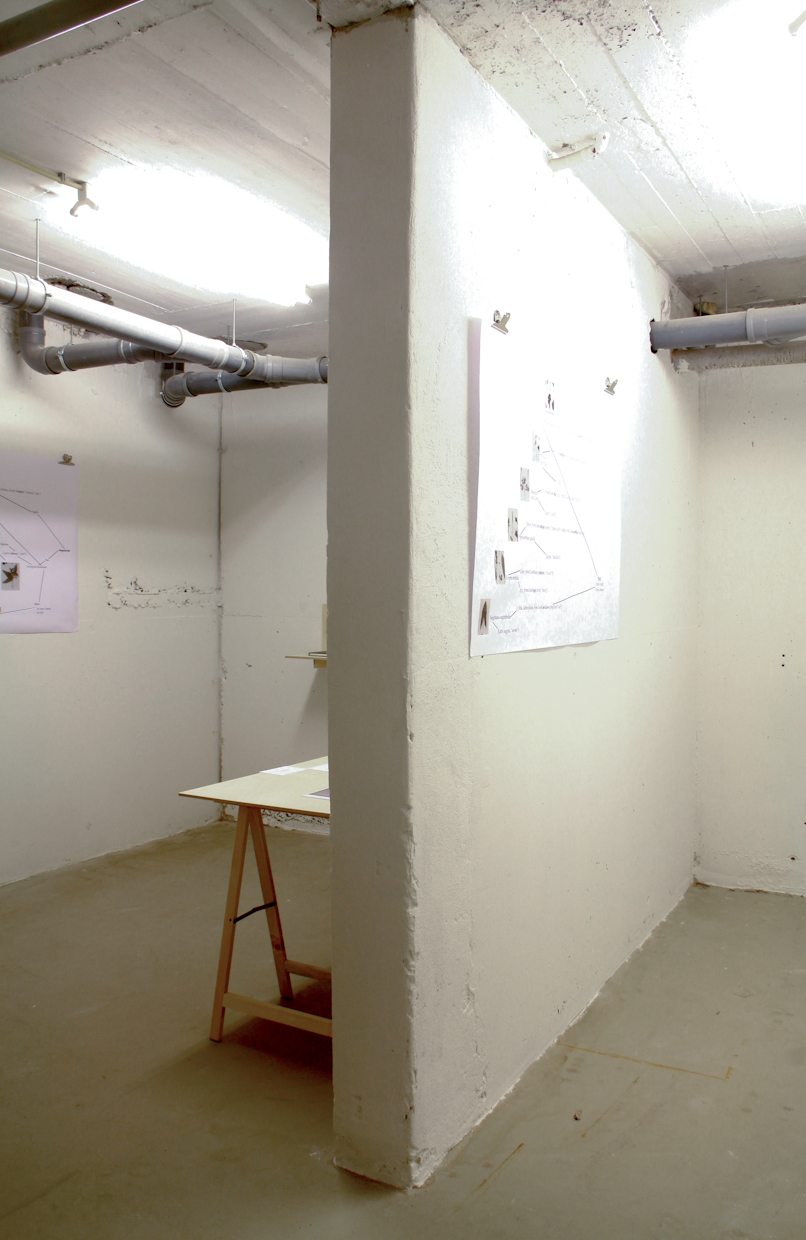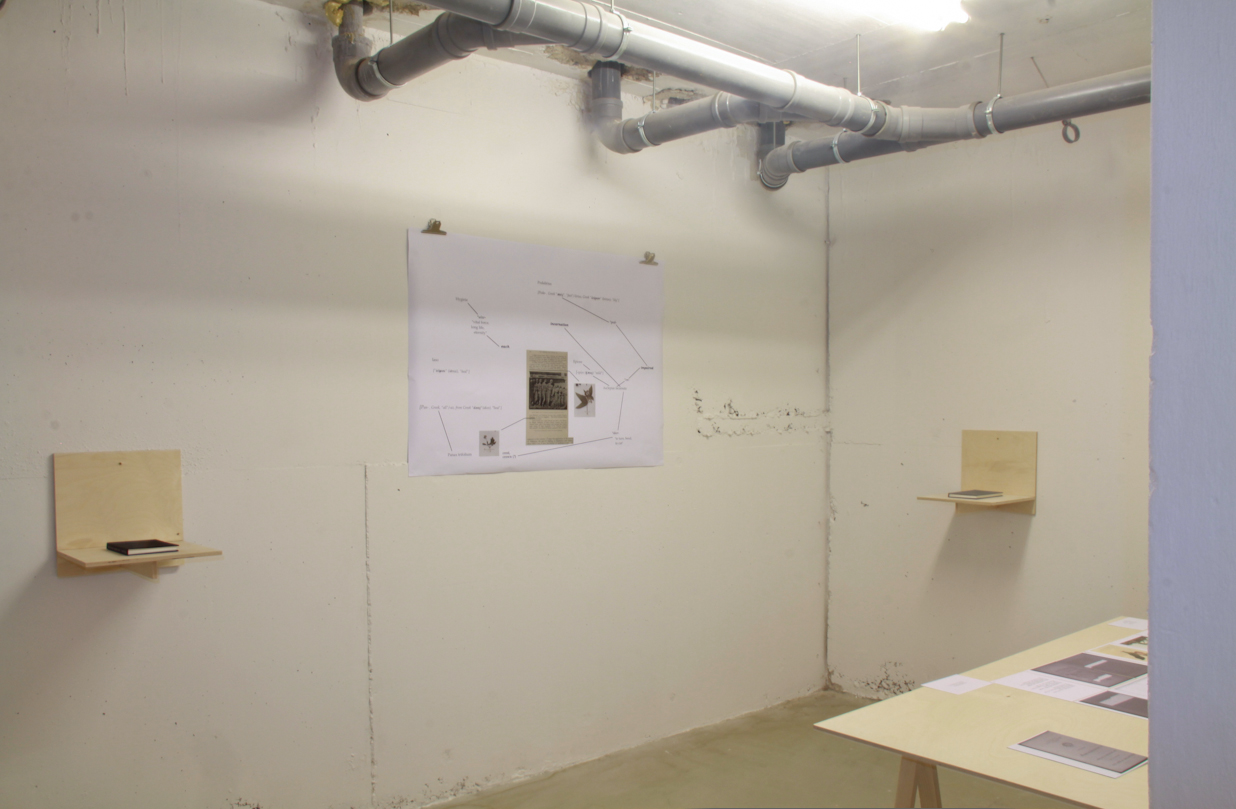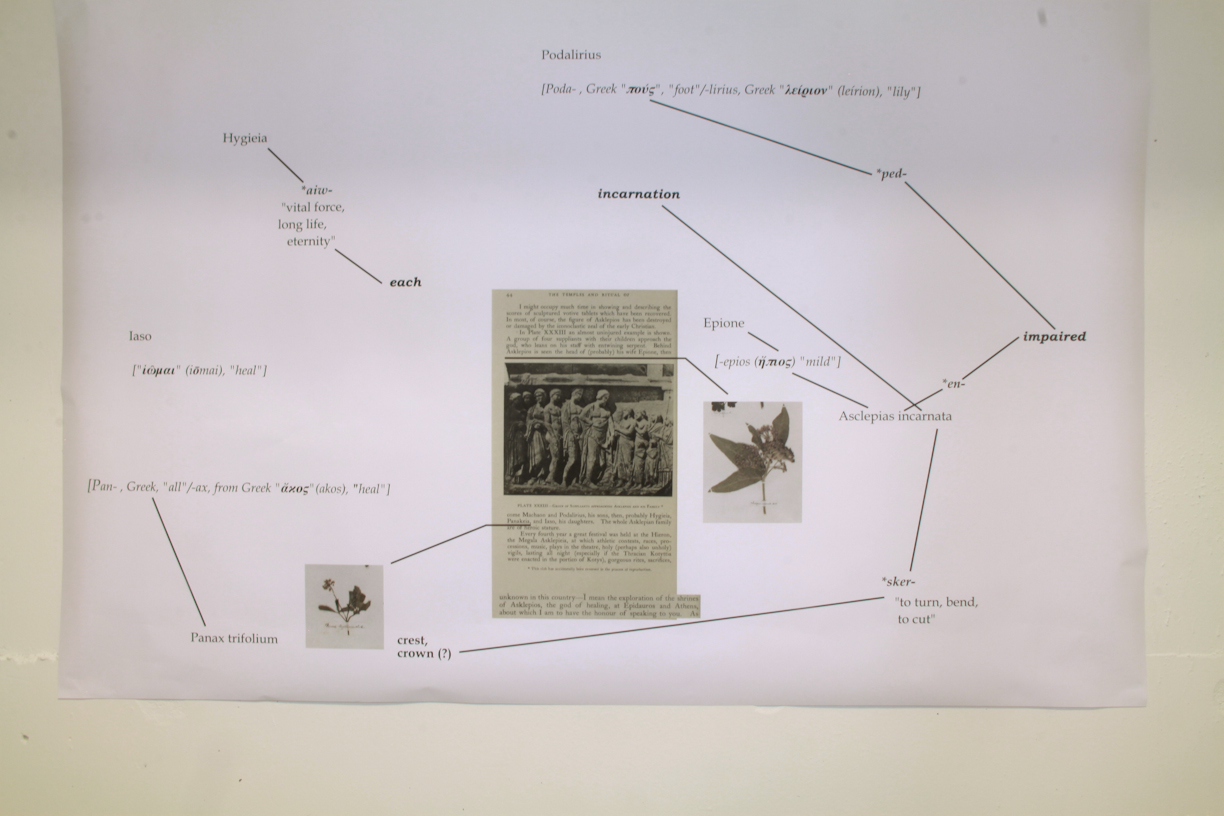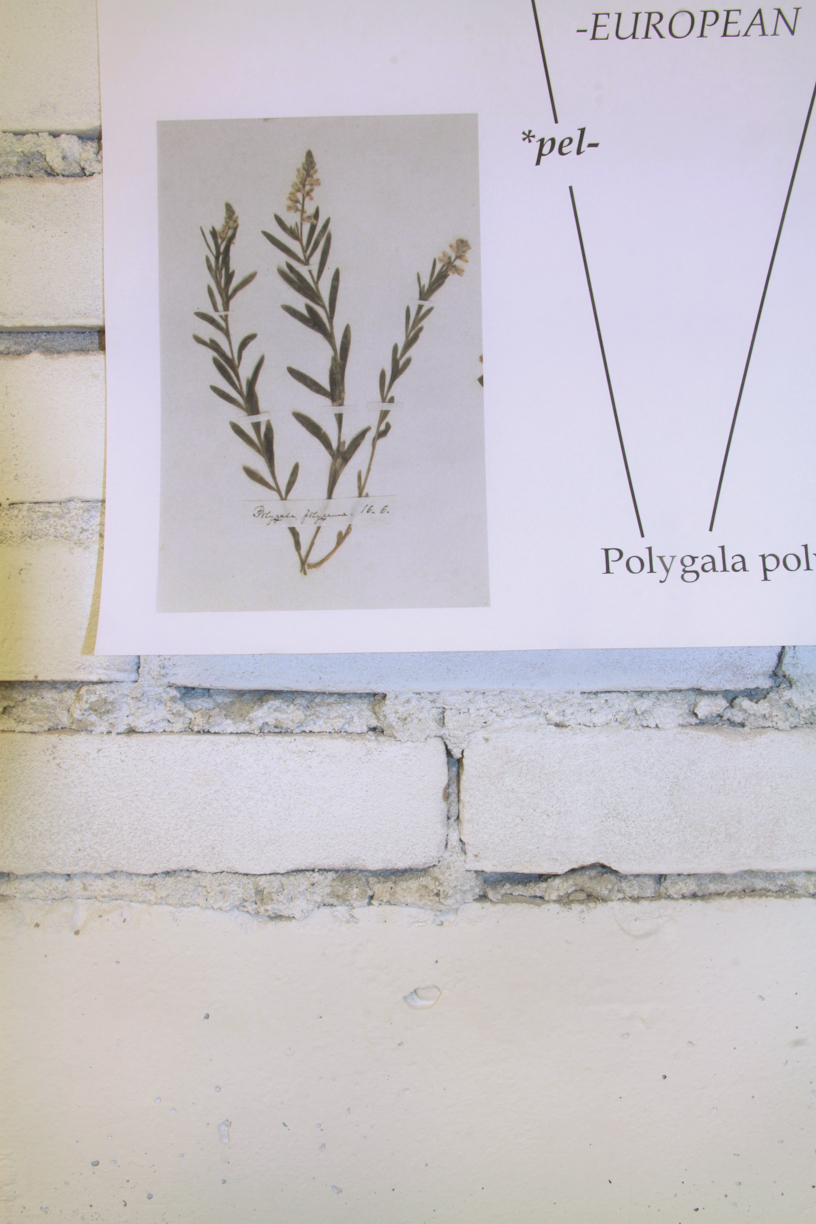Grigoris Rizakis
Instigators of unforeseen meanings
29.03.19 - 13.04.19
The exhibition “Instigators of unforeseen meanings” by Grigoris Rizakis presents works that are part of an ongoing research.
The selection of works has been based on the following criteria: how to fill a basement which exists as a hidden and isolated space and, at the same time, to create the atmosphere of a “reading room”.
Moreover, and although not visible at first sight, certain concepts unite the two individual pieces. Each one constitutes the natural continuation of the other. Nothing apparently connects Charles Darwin and Emily Dickinson, apart from the fact that they were contemporaries; the former in Victorian England, the latter in Victorian America. The decision to place them together creates an atmosphere of a specific texture.
The research currently continues and revolves around the Botanical history of The Netherlands and specifically the Hortus Botanicus of Leiden, which is the first one created in the Country, and among the oldest ones in the world. This, with the intention of realizing works in the near future.





A Simile (or Analogy) for the student of nature
Publication
The piece is based on the “Fertilisation of Orchids” by Charles Darwin published in 1862. Throughout the book, Darwin attempts to classify the mechanisms by which orchids are fertilized and thus he examines their individual features. As his enquiry proceeds and towards its end, he realizes that to apply concrete criteria of classification and therefore a solid and clear approach is something rather unattainable.
Publication
What is basically inherent in his book is a fundamental natural and thus scientific principle: the interaction of the determined biological background with the external environment which constitute the two factors of “becoming”, not only of plants, but certainly of human beings as well.
A continuous new text has been created out of the existing one, after certain rules have been applied: certain elements found in the original book have been retained such as words, marks, and layouts used, can be found in the exact same positions as in the Darwin’s original book.






Untitled (An Incomplete Treatise - In Fascicles and Unbound Sheets)
Edition with box, 3 booklets and approx 17 separate prints placed in a box
+ 3 wall pieces
Edition with box, 3 booklets and approx 17 separate prints placed in a box
+ 3 wall pieces
During her lifetime Dickinson was much more known about her cultivating skills and her love for plants, rather than her poetry, which was an activity nobody knew she kept engaging in. During her school year, between the age of 9 and 16, she created a Herbarium that comprised several plants growing around the area of Amherst, Massachusetts, where she lived. As well as plants she was growing herself at home.
The presented work uses a certain selection of the plants found in the Herbarium and after a careful study they are rendered as the starting point of the piece by creating a free structure which gradually unfolds and generates various thematics and meanings.
Meaning which is implied, logical development and/or the abrupt change of subject matter, contrasts, the multiplication of perspective, ambiguity — clarity at other times — and self-references, are artistic qualities that have highly occupied Rizakis in this piece. And the qualities that relate to Darwin’s publication. Moreover melody, rhythm and relations between image and text, text and text, image and image are at the core of the piece’s architecture and demand the viewer’s/reader’s attention and scrutiny.




Grigoris Rizakis is a Greek artist currently based in The Netherlands, who obtained his MA in Artistic Research from The Royal Academy of Art, The Hague in 2015.
